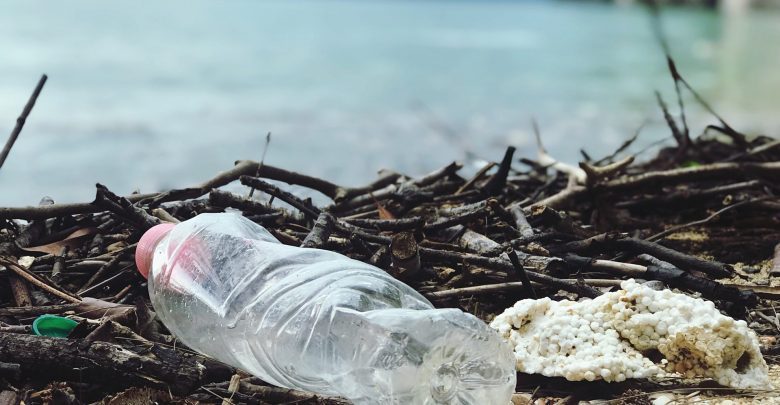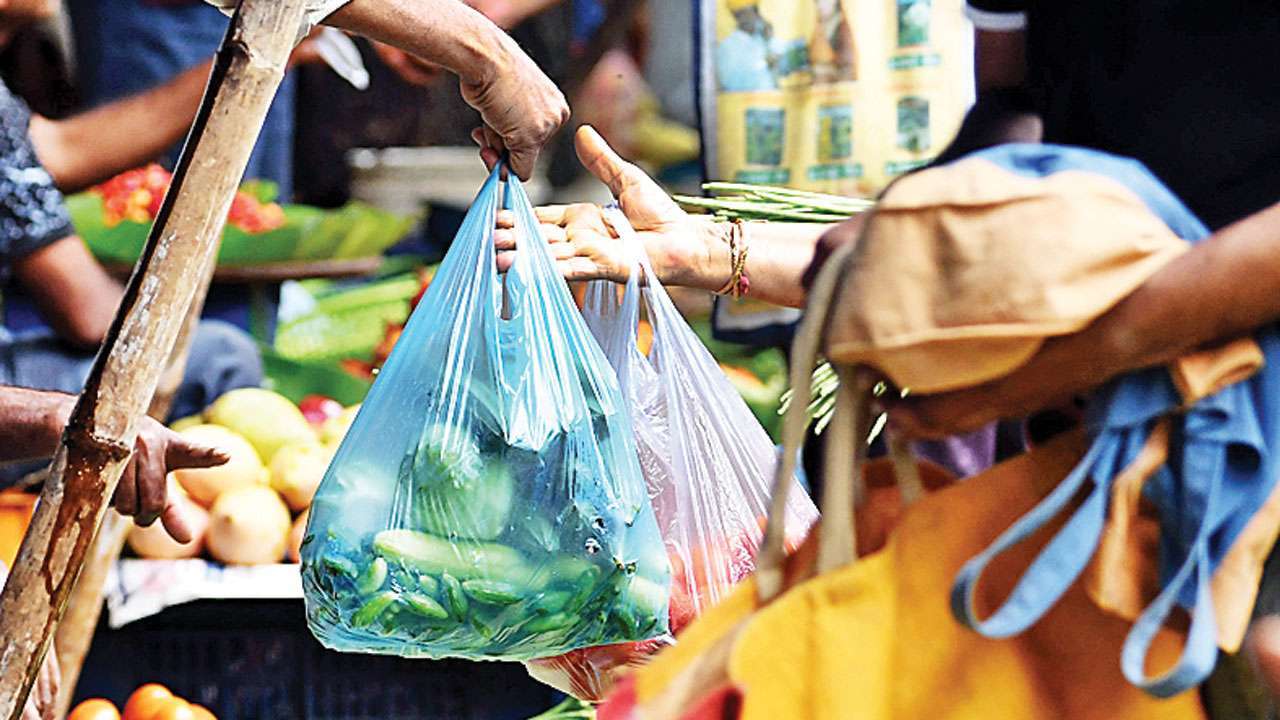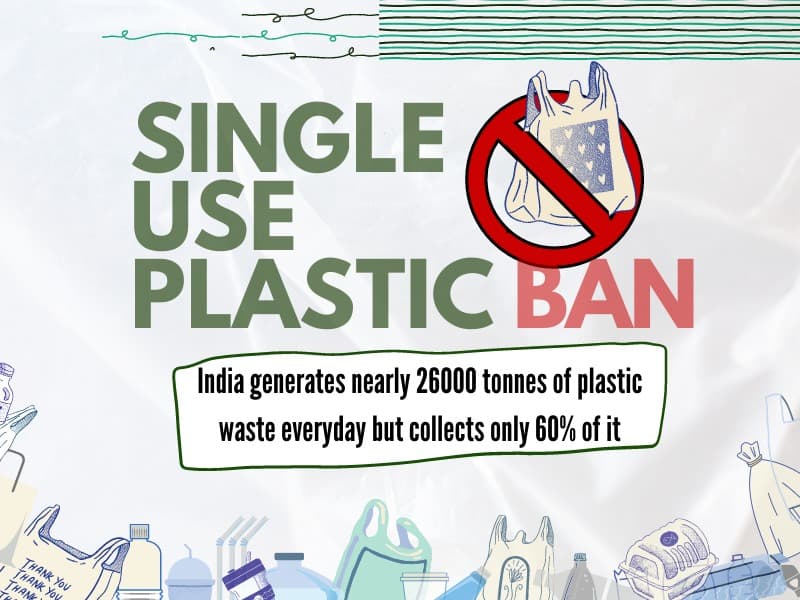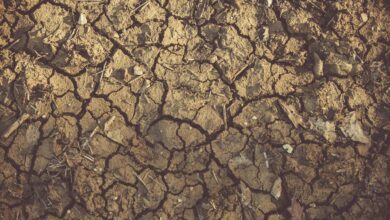
Last month, while trekking the Himalayas, I saw a tea shop at an altitude of 14,000 feet (4,267 m) in a stunning setting. There was a stream on one side, lush greenery on the other, and a spectacular mountain in the background. But even here, to my surprise and disappointment, a pile of empty food wrappers and beverage bottles ruined the scenery. Proof of how far plastic waste and pollution has pervaded India and the rest of the world. As a former beverage industry executive, I feel a sense of responsibility to help solve the problem.
Bold Policy Intent

Although India postponed a ban on single-use plastics, the government is determined to eliminate the scourge of plastic pollution in the country by 2022. If successful, it will put India at the forefront of regulations to solve plastic pollution, well ahead of even the European Union. As with any policy announcement that has a widespread impact, this too will stir up controversies. Industry lobbies will point out all the ways it harms the economy while environmental groups will complain it doesn’t go far enough. News and social media will be full of opinions and stories from both sides of the issue, some biased, some outright false.
The best way to address any criticism is to make the ban succeed. This will require enforcement by local authorities with good training and effective supervision. There should be clear baseline metrics of plastic pollution and accurate measures of the ongoing impact. Periodic reviews should be conducted by a cross-disciplinary committee comprising representatives from industry, government, and civil society. And justifiable exemptions will need to be made, more details worked into the law, loopholes closed, and support provided to vulnerable sections of society whose livelihoods may be negatively impacted.
Bans Alone Are Not Enough
In fairness to industry, the litter issue in India is also a result of people’s attitudes, improper disposal, and a poor waste management infrastructure. While a single-use plastics ban is a great first step, selective taxes, deposit laws, consumer awareness campaigns, investments in waste management infrastructure, and stricter fines for littering are also needed. Otherwise, we run the risk of simply replacing plastic litter with alternative materials. And this is where industry needs to step up, by investing in solutions and partnering with local governments and civic society to implement them.
While a single-use plastics ban is a great first step, selective taxes, deposit laws, consumer awareness campaigns, investments in waste management infrastructure and stricter fines for littering are also needed.
Groundswell of Innovation
The good news is that there are hundreds of solutions and alternatives to single-use plastics that are ready now or in the pipeline. Many have been developed by start-ups led by environmentally focused entrepreneurs in India and across the world. Some are being incubated in large progressive companies. All of them will need investments of time, effort, and money to be scaled up and become commercially viable. This requires visionary leadership in corporations, patient capital from investors, and collaborative efforts between competitors within industries.

The plastic circular economy touches a wide swathe of industries. This includes the petrochemical sector that produces the raw materials, processors that produce the plastics, converters who create finished products, brand owners who use plastics in their packaging, and finally the entire collection, recycling, and waste management industry. There are innovations transforming all these sectors, upending old business models, and raising hopes of a future where plastic pollution can be solved.
Solutions to Plastic Pollution
Some examples of upstream innovations are bioplastics made from algae, agricultural waste and food residues, using bacteria or mushrooms as micro-converters. Some bioplastics like PHA are soil and marine safe, meaning they safely degrade in the environment within weeks or months, leaving no harmful residues. Some startups have already launched biodegradable straws and cutlery made from PHA in other countries.
India has a long history of using natural materials for packaging. For example, the humble paan is a mouth freshener and digestive in an edible package made from betel leaves. My favorite meals are those eaten with my hands using banana leaf plates. A new breed of Indian entrepreneurs is applying technology to traditional materials to create edible and biodegradable disposable cutlery and utensils. There is a worldwide market for these solutions.
The best solutions, however, are the ones that eliminate packaging completely. A great example is the emergence of water dispensers and “Water ATMs” around the country. Thanks to new filtration technologies, the Internet of Things, and other advancements, Indian entrepreneurs have created solutions that can replace plastic water bottles in most locations. This alone can reduce millions of tons of plastic waste.

Where packaging cannot be eliminated, the next best option is reusability. Many of you will remember drinking soft drinks from glass bottles that were returned to the shopkeeper. These returnable glass bottles were replaced to a large extent by plastic because of their convenience and ease of manufacturing. The government should consider providing incentives to bring them back and help reduce plastic waste even more. However, returnable packages must be reused multiple times and logistically optimized to reduce their climate impact compared to single-use packages.
Finally, where single-use plastic cannot be avoided, a plethora of technologies can help recover and sort the waste. Examples are smart bins, sorting machines, reverse vending machines, and smart packaging technologies that make it easier to separate different materials. Once sorted, there are many options to recover value from waste plastics, ranging from chemical recycling that produces virgin quality polymers, to “waste to energy” solutions that produce fuels. Apart from that, waste plastics can also be converted into clothes, shoes, furniture, building materials, and even roads.
Win-Win for All
With all these solutions in the pipeline, the Indian industry need not worry about plastic bans. Instead, they should become part of the solution rather than perpetuate the problem. And since plastic is made from crude oil, reducing India’s dependence on the material will help reduce its import bill. At the same time, the country can promote the efforts of home-grown entrepreneurs, find a use for waste agricultural materials, and become a world leader in sustainable technologies.
Not only are plastics polluting our oceans and waterways and killing marine life – it’s in all of us and we can’t escape consuming plastics.”
Marco Lambertini
Plastic Pollution in India FAQs
How much plastic pollution is in India?
The exact amount of plastic pollution in India is difficult to determine, as it is an ongoing issue with varying levels of pollution across different regions. However, India is considered one of the largest contributors to plastic pollution globally. According to a report by the Central Pollution Control Board (CPCB) of India, the country generates around 26,000 tons of plastic waste every day.
How bad is India's plastic problem?
India's plastic problem is severe and has significant environmental, social, and economic consequences. The country faces challenges in managing and controlling plastic waste due to factors such as population density, inadequate waste management infrastructure, and a lack of awareness among the general public. Plastic waste often ends up in landfills, rivers, and oceans, causing harm to wildlife, ecosystems, and human health. The problem is exacerbated by the widespread use of single-use plastics and limited recycling facilities.
Why does India pollute so much plastic?
Several factors contribute to India's high plastic pollution levels. Rapid industrialization, urbanization, and population growth have led to increased consumption and consequently, higher plastic waste generation. The lack of effective waste management systems and infrastructure plays a significant role in the improper disposal of plastic waste. Additionally, the affordability and convenience of single-use plastics, coupled with limited awareness and enforcement of regulations, contribute to the problem.
Who are the top plastic polluters in India?
Identifying specific entities or individuals as the top plastic polluters in India is challenging due to the diffuse nature of plastic waste generation. However, industries such as packaging, manufacturing, and fast-moving consumer goods are known to contribute significantly to plastic pollution. Additionally, improper waste disposal practices by individuals, businesses, and local authorities collectively contribute to the plastic pollution problem in the country. It is important to address plastic pollution as a systemic issue rather than attributing it solely to specific polluters.




